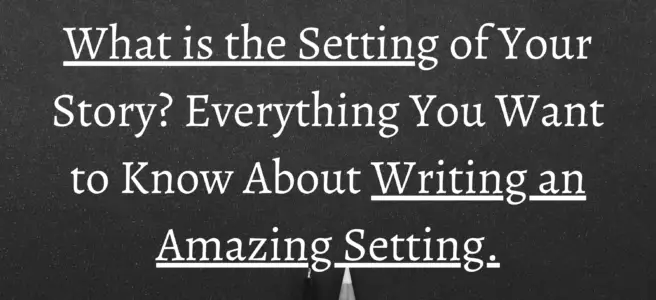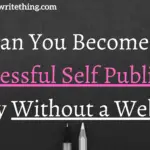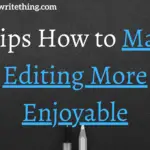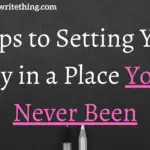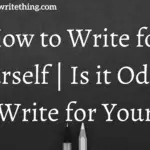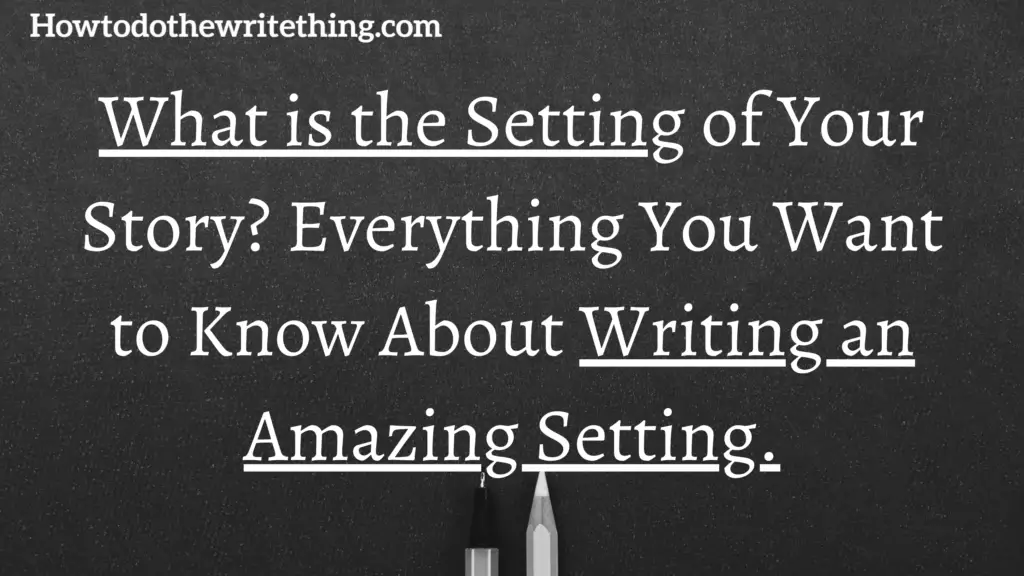
What is the Setting of Your Story? Everything You Want to Know About Writing an Amazing Setting.
What is the setting? What makes a great setting? What type of setting draws the reader in? How do I describe my setting without boring my reader to death?
These are some great questions to start with when you are thinking about your setting.
So let’s dive in.
What is the setting?
“A setting (or backdrop) is the time and geographic location within a narrative, either nonfiction or fiction. It is a literary element. The setting initiates the main backdrop and mood for a story. The setting can be referred to as story world[1] or milieu to include a context (especially society) beyond the immediate surroundings of the story. Elements of setting may include culture, historical period, geography, and hour. Along with the plot, character, theme, and style, setting is considered one of the fundamental components of fiction.” – Source
Thanks Wikipedia! That was thoughtful!
When you are thinking about your setting, another way to think about it is you’re thinking about world building.
Was your character born and raised in this world? Did they get transported here? If they did get transported where did they come from originally?
The setting of your story and the setting your character is in during the story can change. If your story is one where people can transport in and out of worlds then that fact is a part of the story setting, (A universe where characters can transport in and out of other worlds.)
But at any certain moment of your story your setting could be mushroom land, or it might be fairy land. So you have to think about two different kinds of settings in this scenario. Think about the overarching setting of the universe your characters are in and then the subsetting could be the world or part of the world your character finds themselves at any given moment.
This is similarly true with stories that don’t world jump. Your story could be a pirate ship and following their journey. Some subsetting would be time at sea, whereas another subsetting would be going assure. And even further subsetting would be the setting of stormy seas compared to sunny day, nice breeze settings.
It’s important to understand how this makes the reader feel. If the character is going through a really tough time at sea with cold weather and stormy seas this will give the story a much different feel than if the character were relaxing on a sunny beach somewhere.
When choosing your setting for any particular moment, be sure to understand what your reader will see in the their mind and how this affects their feelings.
What time is it?
Did you mean time or time period? Great question.
A key part of our setting is the time period. This gives a BIG BROAD brush stroke on how the reader will feel about the story and the type of imagery they see.
If it’s 2020, they might think of Covid 19! Everything is canceled! Trump Vs. Biden! If it’s 1887 you might have to do some history research and blatantly tell them a bit more about what is going on in the world and what people are wearing. You might have to tell them where the economy is at. If it’s 2457, you’ll definitely have to make some stuff up and tell them about how people no longer have bodies, they all live in tubes! (Ewww, imagining everyone living in tubes gives a very eerie feeling.)
Understanding what time of the day it is also important. If it’s late it could be dark. If it’s early the sun could be rising. If they are in a different galaxy, does it ever get dark or light? And What’s the regular temperature? This is all important to the setting and how it makes the reader feel.
What is the place?
We already covered a bit of the place, but here’s a list just to be a bit more helpful and specific:
- Places can have permanent change or momentary change. The stormy sea is momentary. The building blowing up is permanent. (They could build a new one, but it’ll never be exactly the same.)
- Places give restrictions. A place has boundaries. Are they in a prison or a spaceship? Are they on a planet but can’t get below the surface? Are they underwater but can’t get to the air?
- Places play a big role in mood. A dark gloomy mountain is much more ominous than a happy sunny beach. You can toy with these ideas by making a happy sunny beach turn into a murder scene or having a happy reuniting of two lost characters on the base of a gloomy dark mountain. You can use the setting to give a helpful feeling you want or you can use it to through the reader into curious suspense. (Is this a good or bad scene?! What a nail biter!)
Research your place and time.
DO NOT make stuff up if you are doing some type of historical fiction. You can make up the characters and the story, but the scene and the time have parameters that make sense to a reader and unless you tell them they are in an alternate universe they won’t buy what you’re selling if you can’t do decent research.
Of course if you are inventing everything then you don’t have to do a ton of research, but I find that most readers like a little truth in their fiction. They like to learn something cool about their reality even if they are trying to briefly escape it.
If you write about a scuba instructor that crashes on an island and has to survive 45 days. I find that most readers want you to throw in some fun true facts about scuba diving and how this instructor uses their specific skill set to survive.
Do your research and write something thoughtful.
Some helpful tips for research:
- Internet research is helpful
- Find 3D tours to go to places you are writing about
- Read blogs from people that have actually been there
- Pick 3 books from your local library (most local libraries are free)
- Find social communities on FB, reddit, twitter, where people actually talk about the places and times you are writing into your story
- Use Google street view
Research the idioms.
Idioms are basically sayings.
A good example is Jesus’ words about if a person has a good eye or a bad eye. (I’m paraphrasing) He says that a person full of light will have a good eye, but a person with a bad eye will be full of darkness.
Can you guess what that means?
Without knowing the History and culture of the time, this would be very hard to guess exactly what that means.
But to the people of the time it was just a saying they were used to everyday, and that’s why Jesus said it to them. It was a simple teaching. Back then, 2000 years ago in Israel, if you told someone they had a good eye, that meant they were a generous person. If they had a bad eye it meant they were a greedy person.
So the lesson would be that good generous people used their eyes to look at people and look for ways to give to them, whereas people full of darkness or bad would look at their neighbors greedily and think how can I take from them.
This was a simple idiom or phrase from 2000 years ago. Let’s look at another example:
They just “kicked the bucket.” Now you may have heard this saying before in the 21st century and it simply means the person has passed away or died, but if someone read that and translated it 2000 years from now, they may be very confused.
They might think the character involved literally used their foot and kicked a bucket.
You can use phrases like this in your dialogue.
What’s the dialogue?
Dialogue is actually very important to the setting. As I made the point above depending on what place and time you are in the idioms and common everyday phrases might be different and you have to be the one to decide how different they will be and how you will translate them for the reader.
Reading Shakespeare, you may need an interpreter. Reading Jane Austin there is a good bit of timely phrases as well.
Use the time and place to match your dialogue and really give your reader an experience of stepping into the setting you are trying to create for them.
If you nail the time and place but the dialogue of the characters doesn’t match you’ll have really missed some brownie points on the setting score scale.
Give small injections of the setting.
Don’t do giant paragraph drops of setting on the first pages or paragraphs of your story. We have to learn when and how to inject settings.
Bad example: “The castle was a stone castle. It was 400 feet tall. It had vines growing up. It was dark and cloudy. It started to rain. Tracey walked up to the castle.”
Good example: “Tracey stepped up to the castle. She could see her breath for the first time. Without warning thunder struck and it caused her to jump. The first couple rain drops hit her shoulders. They felt like icy fingers that wouldn’t let go. She looked up the castle wall, her eyes following the vines that had grown innumerable over time. She didn’t want to go in, but she had nowhere else to go. She reached out for the handle of the door.”
Okay, so it’s not an amazing example and needs lots of editing, but I think it gives the point. We have to inject the setting into our story as the plot moves forward. We don’t have to stop the plot to get the reader to imagine our setting and we shouldn’t. We should also be revealing more about the character through the setting and time. These things should be happening all the time to keep the readers interested in continuing the story.
Do you want to know what happens next to Tracey as she touches the door handle?
If yes, then it’s as simple as that and we’ve done our job as a writer. If no, then we have more work to do in getting this scene ready to entertain a reader!
Take notes.
This should be a normal part of any writer’s life. As we research we should also be writing and recording our findings. ESPECIALLY things we want to throw directly into the story.
If I’m writing about New Zealand and I’m surfing through Google view and I find the perfect market place for a scene I have in mind I need to stop and start writing.
These notes don’t have to be perfect. In fact, I recommend they don’t be. But we need to continue to practice how to describe what we see in words. If I find the perfect place for my scene, I need to stop and write out what it looks like.
I then need to picture my character in it. What are they doing? Do they stand far back from vendors and just look? Do they go up and touch and handle items? Do they talk to vendors and make small talk?
These are important to revealing the character through the settings we put them in. and it all ties together.
Final thoughts:
The setting is the time and place where we find your characters. This is both the overarching setting of the story and the individual subsettings we see them in over time in the story.
Remember to not only think about the time period, but the time of the day for any given scene. (Especially if they time travel 🙂 )
Do your research. Don’t be lazy with research. Not every writer will like research, but some will love it. Look into the place, time, and language for any given potential story plot.
While you are doing research be sure to take time to start writing down descriptions of places and times and how your character would interact with them and why. If you know why your character would make small talk with a random vendor in New Zealand, then you know how to get your reader to see why without always telling them why. (Or vice versa, the character might do something and your reader doesn’t know why, but is curious. This gives you the opportunity to keep them hooked for a moment while you figure out how to tell them.)
Once you have all your ingredients from your research, learn to inject them into places over time in the story. Always be moving the story along and adding extra to the plot by placing the character into the settings and showing how they would interact with it. As you show how they interact with their setting your reader will get to know them on a personal level and they will love your writing style for being able to get to know characters without you literally having to tell them about their personalities.
Interested in starting a blog of your own? Check out Bluehost.
After checking out Bluehost, see how we made a profit FAST with our blog and how you can too: Our #1 Easy way that we made a profit with our blog on year 1, not year 5.
Need a Cheaper Plan? Try DreamHost.
Try Grammarly, The Free tool that should be in every writer’s toolbelt.
Hope this helps!
Happy writing!
Another Post you Might like:
Mythical Creatures | 7 Tips on How to Write Mythical Creatures
Other Popular Posts you might enjoy:
5 Tricks How to Hide Your Villain Right Before Their Eyes
10 Tips How to Write Villains that Play Mind Games with Their Victims
4 Tips How to Write your Character Hitting Rock Bottom
10 Toxic Bad Habits That’ll Crush Your Fictional Character’s Relationships
How to Write From Your Villain’s Mind.
How To Write 4 Scenes That Reveal Who Your Character Is Seamlessly
Psychopath: How to Write The Perfect Psychopath
8 Tips How to Write the Perfect Sociopath
Fictional Characters: 28+ Bad Habits to Introduce to Your Fictional Characters
List of 10 Weapons for Fictional Characters
List of 10 Bad Habits Fictional Characters Need Help Breaking
Resources:
How to Start a Blog in 11 Simple Easy Steps in 2020
How to Write a Book: 32 Tips | Your MASSIVE Guide How to Write a Book
Define Self-Esteem for Writing Characters: 10 Ideas
Covert Narcissist and Why You Should Write One
Inspiring Quotes Posts:
Inspiring Quotes | 101+ Inspirational Quotes to Motivate You Today
190+ Inspirational Quotes for Women
303+ Funny Inspirational Quotes
115+ Inspirational Quotes in Short
103+ Quotes About What is Love
This post:
What is the Setting of Your Story? Everything You Want to Know About Writing an Amazing Setting.
Interested in starting a blog of your own? Check out Bluehost.
After checking out Bluehost, see how we made a profit FAST with our blog and how you can too: Our #1 Easy way that we made a profit with our blog on year 1, not year 5.
Need a Cheaper Plan? Try DreamHost.
Try Grammarly, The Free tool that should be in every writer’s toolbelt.
What is the Setting of Your Story? Everything You Want to Know About Writing an Amazing Setting.
Enjoying What is the Setting of Your Story? Everything You Want to Know About Writing an Amazing Setting? Take a moment and consider sharing this social-friendly image to say thanks and feel free to comment with your thoughts below! 🙂
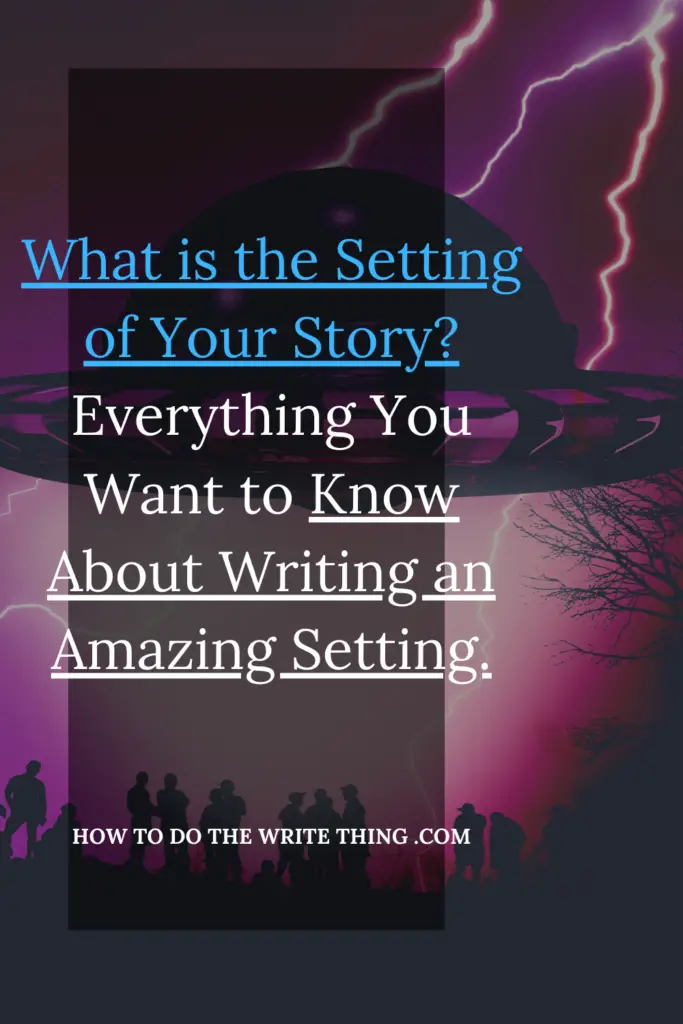
Interested in starting a blog of your own? Check out Bluehost.
After checking out Bluehost, see how we made a profit FAST with our blog and how you can too: Our #1 Easy way that we made a profit with our blog on year 1, not year 5.
Need a Cheaper Plan? Try DreamHost.
Try Grammarly, The Free tool that should be in every writer’s toolbelt.
Make sure your posts are readable. Use this readability score check
Want to check out a writer’s community to test your writing and get feedback?
Check out these FREE trial resources from Amazon for when you work from home (or are stuck at home 🙂 ) As an Amazon associate, if you do sign up or buy anything using Amazon links from our site we make a commission at no extra cost to you.
Free Prime Membership Trial:
Try Amazon Prime 30-Day Free Trial
Try Prime Discounted (Free Trial)
Make your Free Amazon Wedding Registry:
Create an Amazon Wedding Registry
Get Free Video Channels Trial with Prime:
Join Prime Video Channels Free Trial
Try a Free Amazon Family Trial:
Join Amazon Family (30-day Free Trial)
Get Unlimited Music for Free (30-day free trial):
Free movies and TV shows trial:
Join Amazon Prime – Watch Thousands of Movies & TV Shows Anytime – Start Free Trial Now
Free Prime for students trial:
Free Baby Registry:
Shop Amazon – Create an Amazon Baby Registry
Free trial of Twitch Prime:
And for when you REALLY work at home:
Create Amazon Business Account
It is the Amazon you love, for work. Make workplace procurement easier with convenient delivery options, simplified purchasing workflows, multiple payment options, and a competitive marketplace with business-only pricing and quantity discounts. Anyone who makes purchases for work (eg. procurement specialists, office administration, IT departments, etc.) can create a FREE account for their business. Customer must be from a verified business in order to successfully create their Amazon Business account.
What is the Setting of Your Story? Everything You Want to Know About Writing an Amazing Setting.
Enjoying What is the Setting of Your Story? Everything You Want to Know About Writing an Amazing Setting? Take a moment and consider sharing this social-friendly image to say thanks and feel free to comment with your thoughts below! 🙂
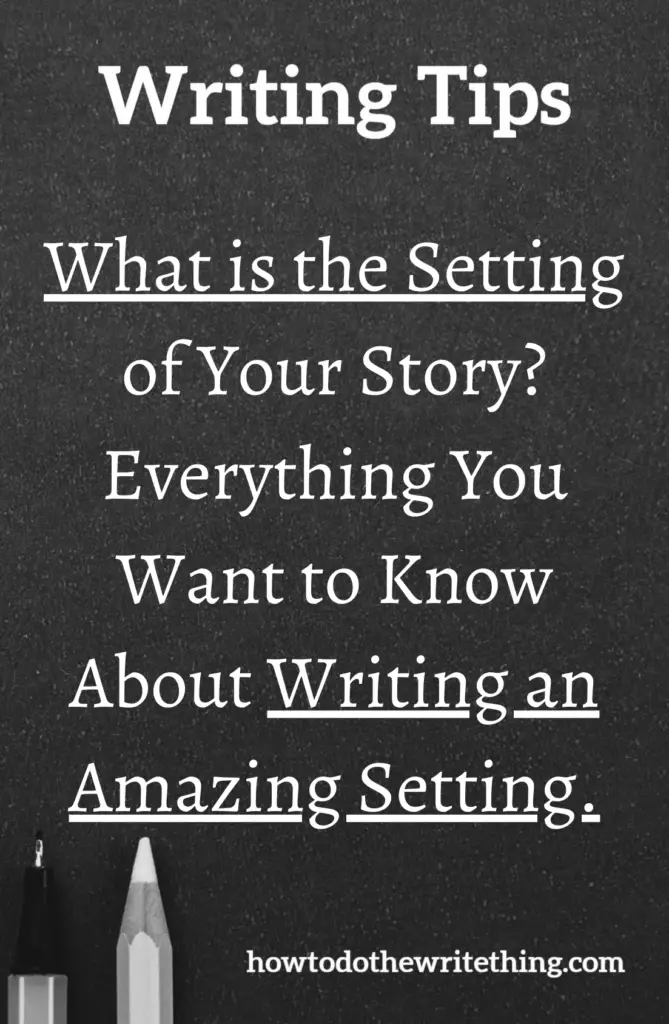
Interested in starting a blog of your own? Check out Bluehost.
After checking out Bluehost, see how we made a profit FAST with our blog and how you can too: Our #1 Easy way that we made a profit with our blog on year 1, not year 5.
Need a Cheaper Plan? Try DreamHost.
Try Grammarly, The Free tool that should be in every writer’s toolbelt.
We hope you enjoyed: What is the Setting of Your Story? Everything You Want to Know About Writing an Amazing Setting!
